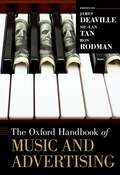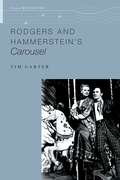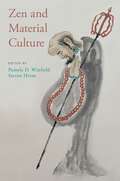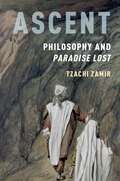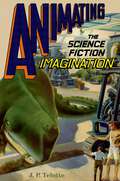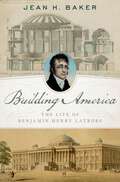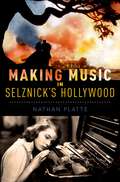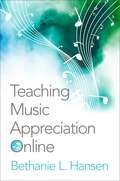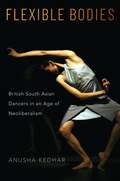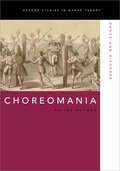- Table View
- List View
The Oxford Handbook of Music and Advertising (Oxford Handbooks)
The Oxford Handbook of Music and Advertising is an essential guide to the crucial role that music plays in relation to the audio or audiovisual advertising message, from the perspectives of its creation, interpretation, and reception. The book's unique three-part organization reflects this life cycle of an advertisement, from industry inception to mass-mediated text to consumer behaviour. Experts well versed in the practice, analysis, and empirical studies of the commercial message have contributed to the collection's forty-two chapters, which collectively represent the most ambitious and comprehensive attempt to date to address the important intersections of music and advertising. Handbook chapters are self-contained yet share borders with other contributions within a given section and across the major sections of the book, so readers can either study one topic of particular interest or read through to gain an understanding of the broader issues at stake. Within the book's Introduction, each editor has provided an overview of the unifying themes for the section for which they were responsible, with brief summaries of individual contributions at the beginnings of the sections. The lists of recommended readings at the end of chapters are intended to assist readers in finding further literature about the topic. An overview of industry practices by a music insider is provided in the Appendix, giving context for the three parts of the book.
The Oxford Handbook of Music and Advertising (Oxford Handbooks)
by Siu-Lan Tan James Deaville Ron RodmanThe Oxford Handbook of Music and Advertising is an essential guide to the crucial role that music plays in relation to the audio or audiovisual advertising message, from the perspectives of its creation, interpretation, and reception. The book's unique three-part organization reflects this life cycle of an advertisement, from industry inception to mass-mediated text to consumer behaviour. Experts well versed in the practice, analysis, and empirical studies of the commercial message have contributed to the collection's forty-two chapters, which collectively represent the most ambitious and comprehensive attempt to date to address the important intersections of music and advertising. Handbook chapters are self-contained yet share borders with other contributions within a given section and across the major sections of the book, so readers can either study one topic of particular interest or read through to gain an understanding of the broader issues at stake. Within the book's Introduction, each editor has provided an overview of the unifying themes for the section for which they were responsible, with brief summaries of individual contributions at the beginnings of the sections. The lists of recommended readings at the end of chapters are intended to assist readers in finding further literature about the topic. An overview of industry practices by a music insider is provided in the Appendix, giving context for the three parts of the book.
Rodgers and Hammerstein's Carousel (Oxford Keynotes)
by Tim CarterCarousel (1945), with music by Richard Rodgers and the book and lyrics by Oscar Hammerstein II, was their second collaboration following the surprising success of Oklahoma! (1943). They worked again with Theresa Helburn and Lawrence Langner of the Theatre Guild (producers), Rouben Mamoulian (director), and Agnes de Mille (choreographer). But with Oklahoma! still running to sell-out houses, they needed to do something quite different. Based on a play, Liliom (1909), by the Hungarian playwright Ferenc Molnár, Carousel took Broadway musical theater in far darker directions because of its subject matter-the protagonist, Billy Bigelow, is wholly an anti-hero-and also given its extensive music that some claimed came close to opera. The action is shifted from a gritty working-class suburb of Budapest to the New England coast (Maine), but the themes remain the same as two social misfits try to survive harsh economic times. Billy Bigelow is unemployed, prone to domestic violence, and dies in the course of committing a robbery; Julie Jordan sticks by him through thick and thin; and the show seeks some manner of redemption for both of them as Billy is given a day back on earth to do some good for his wife and their daughter. Troubling though these matters are nowadays, they fit squarely in the context of a country moving through the end of World War II to an uncertain future. Not for nothing had composers such as Giacomo Puccini and Kurt Weill already tried to persuade Molnár to release his play. It also led Rodgers and Hammerstein to new heights: songs such as "If I Loved You," Billy's "Soliloquy," and "You'll Never Walk Alone" transformed the American musical. In this book, we discover how and why they came about, and exactly what Carousel was trying to achieve.
RODGERS & HAMMERSTEIN'S CAROUSEL OKS C (Oxford Keynotes)
by Tim CarterCarousel (1945), with music by Richard Rodgers and the book and lyrics by Oscar Hammerstein II, was their second collaboration following the surprising success of Oklahoma! (1943). They worked again with Theresa Helburn and Lawrence Langner of the Theatre Guild (producers), Rouben Mamoulian (director), and Agnes de Mille (choreographer). But with Oklahoma! still running to sell-out houses, they needed to do something quite different. Based on a play, Liliom (1909), by the Hungarian playwright Ferenc Molnár, Carousel took Broadway musical theater in far darker directions because of its subject matter-the protagonist, Billy Bigelow, is wholly an anti-hero-and also given its extensive music that some claimed came close to opera. The action is shifted from a gritty working-class suburb of Budapest to the New England coast (Maine), but the themes remain the same as two social misfits try to survive harsh economic times. Billy Bigelow is unemployed, prone to domestic violence, and dies in the course of committing a robbery; Julie Jordan sticks by him through thick and thin; and the show seeks some manner of redemption for both of them as Billy is given a day back on earth to do some good for his wife and their daughter. Troubling though these matters are nowadays, they fit squarely in the context of a country moving through the end of World War II to an uncertain future. Not for nothing had composers such as Giacomo Puccini and Kurt Weill already tried to persuade Molnár to release his play. It also led Rodgers and Hammerstein to new heights: songs such as "If I Loved You," Billy's "Soliloquy," and "You'll Never Walk Alone" transformed the American musical. In this book, we discover how and why they came about, and exactly what Carousel was trying to achieve.
ZEN & MATERIAL CULTURE C
by Pamela D. Winfield and Steven HeineThe stereotype of Zen Buddhism as a minimalistic or even immaterial meditative tradition persists in the Euro-American cultural imagination. This volume calls attention to the vast range of "stuff" in Zen by highlighting the material abundance and iconic range of the Soto, Rinzai, and Obaku sects in Japan. Chapters on beads, bowls, buildings, staffs, statues, rags, robes, and even retail commodities in America all shed new light on overlooked items of lay and monastic practice in both historical and contemporary perspectives. Nine authors from the cognate fields of art history, religious studies, and the history of material culture analyze these "Zen matters" in all four senses of the phrase: the interdisciplinary study of Zen's matters (objects and images) ultimately speaks to larger Zen matters (ideas, ideals) that matter (in the predicate sense) to both male and female practitioners, often because such matters (economic considerations) help to ensure the cultural and institutional survival of the tradition. Zen and Material Culture expands the study of Japanese Zen Buddhism to include material inquiry as an important complement to mainly textual, institutional, or ritual studies. It also broadens the traditional purview of art history by incorporating the visual culture of everyday Zen objects and images into the canon of recognized masterpieces by elite artists. Finally, the volume extends Japanese material and visual cultural studies into new research territory by taking up Zen's rich trove of materia liturgica and supplementing the largely secular approach to studying Japanese popular culture. This groundbreaking volume will be a resource for anyone whose interests lie at the intersection of Zen art, architecture, history, ritual, tea ceremony, women's studies, and the fine line between Buddhist materiality and materialism.
Ascent: Philosophy and Paradise Lost
by Tzachi ZamirParadise Lost has never received a substantial, book-length reading by a philosopher. This, however should surprise no one, for Milton himself despised philosophers. He associated philosophy with deceit in his theological writings, and made philosophizing into one of the activities of fallen angels in hell. Yet, in this book, philosopher and literary critic Tzachi Zamir argues that Milton's disdain for their vocation should not prevent philosophers from turning an inquisitive eye to Paradise Lost. Because Milton's greatest poem conducts a multilayered examination of puzzles that intrigue philosophers, instead of neatly breaking from philosophy, it maintains a penetrating rapport with it. Paradise Lost sets forth bold claims regarding the meaning of genuine knowledge, or acting meaningfully, or taking in the world fully, or successfully withdrawing from inner deadness. Other topics touched upon by Milton involve some of the most central issues within the philosophy of religion: the relationship between reason and belief, the uniqueness of religious poetry, the meaning of gratitude, and the special role of the imagination in faith. This tension-disparaging philosophy on the one hand, but taking up much of what philosophers hope to understand on the other-turns Milton's poem into an exceptionally potent work for a philosopher of literature. Ascent is a philosophical reading of the poem that attempts to keep audible Milton's anti-philosophy stance. The picture of interdisciplinarity that emerges is, accordingly, neither one of a happy percolation among fields ('philosophy', 'literature'), nor one of rigid boundaries. Overlap and partial agreement clash against contestation and rivalry. It is these conflicting currents which Ascent aims to capture, if not to reconcile.
Ascent: Philosophy and Paradise Lost
by Tzachi ZamirParadise Lost has never received a substantial, book-length reading by a philosopher. This, however should surprise no one, for Milton himself despised philosophers. He associated philosophy with deceit in his theological writings, and made philosophizing into one of the activities of fallen angels in hell. Yet, in this book, philosopher and literary critic Tzachi Zamir argues that Milton's disdain for their vocation should not prevent philosophers from turning an inquisitive eye to Paradise Lost. Because Milton's greatest poem conducts a multilayered examination of puzzles that intrigue philosophers, instead of neatly breaking from philosophy, it maintains a penetrating rapport with it. Paradise Lost sets forth bold claims regarding the meaning of genuine knowledge, or acting meaningfully, or taking in the world fully, or successfully withdrawing from inner deadness. Other topics touched upon by Milton involve some of the most central issues within the philosophy of religion: the relationship between reason and belief, the uniqueness of religious poetry, the meaning of gratitude, and the special role of the imagination in faith. This tension-disparaging philosophy on the one hand, but taking up much of what philosophers hope to understand on the other-turns Milton's poem into an exceptionally potent work for a philosopher of literature. Ascent is a philosophical reading of the poem that attempts to keep audible Milton's anti-philosophy stance. The picture of interdisciplinarity that emerges is, accordingly, neither one of a happy percolation among fields ('philosophy', 'literature'), nor one of rigid boundaries. Overlap and partial agreement clash against contestation and rivalry. It is these conflicting currents which Ascent aims to capture, if not to reconcile.
Animating the Science Fiction Imagination
by J.P. TelotteLong before flying saucers, robot monsters, and alien menaces invaded our movie screens in the 1950s, there was already a significant but overlooked body of cinematic science fiction. Through analyses of early twentieth-century animations, comic strips, and advertising, Animating the Science Fiction Imagination unearths a significant body of cartoon science fiction from the pre-World War II era that appeared at approximately the same time the genre was itself struggling to find an identity, an audience, and even a name. In this book, author J.P. Telotte argues that these films helped sediment the genre's attitudes and motifs into a popular culture that found many of those ideas unsettling, even threatening. By binding those ideas into funny and entertaining narratives, these cartoons also made them both familiar and non-threatening, clearing a space for visions of the future, of other worlds, and of change that could be readily embraced in the post-war period.
ANIMATING THE SCIENCE FICTION FILM C
by J.P. TelotteLong before flying saucers, robot monsters, and alien menaces invaded our movie screens in the 1950s, there was already a significant but overlooked body of cinematic science fiction. Through analyses of early twentieth-century animations, comic strips, and advertising, Animating the Science Fiction Imagination unearths a significant body of cartoon science fiction from the pre-World War II era that appeared at approximately the same time the genre was itself struggling to find an identity, an audience, and even a name. In this book, author J.P. Telotte argues that these films helped sediment the genre's attitudes and motifs into a popular culture that found many of those ideas unsettling, even threatening. By binding those ideas into funny and entertaining narratives, these cartoons also made them both familiar and non-threatening, clearing a space for visions of the future, of other worlds, and of change that could be readily embraced in the post-war period.
Arts of Allusion: Object, Ornament, and Architecture in Medieval Islam
by Margaret S. GravesThe art of the object reached unparalleled heights in the medieval Islamic world, yet the intellectual dimensions of ceramics, metalwares, and other plastic arts in this milieu have not always been acknowledged. Arts of Allusion reveals the object as a crucial site where pre-modern craftsmen of the eastern Mediterranean and Persianate realms engaged in fertile dialogue with poetry, literature, painting, and, perhaps most strikingly, architecture. Lanterns fashioned after miniature shrines, incense burners in the form of domed monuments, earthenware jars articulated with arches and windows, inkwells that allude to tents: through close studies of objects from the ninth to the thirteenth centuries, this book reveals that allusions to architecture abound across media in the portable arts of the medieval Islamic world. Arts of Allusion draws upon a broad range of material evidence as well as medieval texts to locate its subjects in a cultural landscape where the material, visual, and verbal realms were intertwined. Moving far beyond the initial identification of architectural types with their miniature counterparts in the plastic arts, Margaret Graves develops a series of new frameworks for exploring the intelligent art of the allusive object. These address materiality, representation, and perception, and examine contemporary literary and poetic paradigms of metaphor, description, and indirect reference as tools for approaching the plastic arts. Arguing for the role of the intellect in the applied arts and for the communicative potential of ornament, Arts of Allusion asserts the reinstatement of craftsmanship into Islamic intellectual history.
Arts of Allusion: Object, Ornament, and Architecture in Medieval Islam
by Margaret S. GravesThe art of the object reached unparalleled heights in the medieval Islamic world, yet the intellectual dimensions of ceramics, metalwares, and other plastic arts in this milieu have not always been acknowledged. Arts of Allusion reveals the object as a crucial site where pre-modern craftsmen of the eastern Mediterranean and Persianate realms engaged in fertile dialogue with poetry, literature, painting, and, perhaps most strikingly, architecture. Lanterns fashioned after miniature shrines, incense burners in the form of domed monuments, earthenware jars articulated with arches and windows, inkwells that allude to tents: through close studies of objects from the ninth to the thirteenth centuries, this book reveals that allusions to architecture abound across media in the portable arts of the medieval Islamic world. Arts of Allusion draws upon a broad range of material evidence as well as medieval texts to locate its subjects in a cultural landscape where the material, visual, and verbal realms were intertwined. Moving far beyond the initial identification of architectural types with their miniature counterparts in the plastic arts, Margaret Graves develops a series of new frameworks for exploring the intelligent art of the allusive object. These address materiality, representation, and perception, and examine contemporary literary and poetic paradigms of metaphor, description, and indirect reference as tools for approaching the plastic arts. Arguing for the role of the intellect in the applied arts and for the communicative potential of ornament, Arts of Allusion asserts the reinstatement of craftsmanship into Islamic intellectual history.
Building America: The Life of Benjamin Henry Latrobe
by Jean H. BakerAn English émigré who became America's first professional architect, Benjamin Henry Latrobe put his stamp on the built landscape of the new republic. Latrobe contributed to such iconic structures as the south wing of the US Capitol building, the White House, and the Navy Yard. He created some of the early republic's greatest neoclassical interiors, including the Statuary Hall and the Senate, House, and Supreme Court Chambers. As a young man, Latrobe was apprenticed to both a leading architect and civil engineer in London, studied the European continent's architectural and engineering monuments, worked on canals, and designed private houses. After the death of his first wife, he was bankrupt and emigrated to the United States in 1796 to restart his career. For the new nation with grand political expectations, he intended buildings and engineering projects to match those aspirations. Like his patron Thomas Jefferson, Latrobe saw his neoclassical designs as a way to convey American democracy. He envisioned his engineering projects, such as the canals and municipal water systems for Philadelphia and New Orleans, as a way to unite the nation and improve public health. Jean Baker conveys the personality of this charming, driven, and often frustrated genius and the era in which he lived. Latrobe tried to establish architecture as a profession with high standards, established fees, and recognized procedures, though he was unable to collect fees and earn the living his work was worth. Like many of his peers, he speculated and found himself in bankruptcy several times. Building America masterfully narrates the life and legacy of a key figure in creating an American aesthetic in the new United States.
Building America: The Life of Benjamin Henry Latrobe
by Jean H. BakerAn English émigré who became America's first professional architect, Benjamin Henry Latrobe put his stamp on the built landscape of the new republic. Latrobe contributed to such iconic structures as the south wing of the US Capitol building, the White House, and the Navy Yard. He created some of the early republic's greatest neoclassical interiors, including the Statuary Hall and the Senate, House, and Supreme Court Chambers. As a young man, Latrobe was apprenticed to both a leading architect and civil engineer in London, studied the European continent's architectural and engineering monuments, worked on canals, and designed private houses. After the death of his first wife, he was bankrupt and emigrated to the United States in 1796 to restart his career. For the new nation with grand political expectations, he intended buildings and engineering projects to match those aspirations. Like his patron Thomas Jefferson, Latrobe saw his neoclassical designs as a way to convey American democracy. He envisioned his engineering projects, such as the canals and municipal water systems for Philadelphia and New Orleans, as a way to unite the nation and improve public health. Jean Baker conveys the personality of this charming, driven, and often frustrated genius and the era in which he lived. Latrobe tried to establish architecture as a profession with high standards, established fees, and recognized procedures, though he was unable to collect fees and earn the living his work was worth. Like many of his peers, he speculated and found himself in bankruptcy several times. Building America masterfully narrates the life and legacy of a key figure in creating an American aesthetic in the new United States.
Inhospitable World: Cinema in the Time of the Anthropocene
by Jennifer FayIn recent years, environmental and human rights advocates have suggested that we have entered the first new geological epoch since the end of the ice age: the Anthropocene. In this new epoch, humans have come to reshape unwittingly both the climate and natural world; humankind has caused mass extinctions of plant and animal species, polluted the oceans, and irreversibly altered the atmosphere. Ironically, our efforts to make the planet more hospitable to ourselves seem to be driving us toward our inevitable extinction. A force of nature, humanity is now decentered as the agent of history. As Jennifer Fay argues, this new situation is to geological science what cinema has always been to human culture. Film, like the Anthropocene, is a product of the industrial revolution, but arises out of a desire to preserve life and master time and space. It also calls for the creation of artificial worlds, unnatural weather, and deadly environments for entertainment, scientific study, and devising military strategy. Filmmaking stages, quite literally, the process by which worlds and weather come into being and meaning, and it mimics the forces that are driving this new planetary inhospitality. Cinema, in other words, provides an image of "nature" in the age of its mechanical reproducability. Fay argues that cinema exemplifies the philosophical, political, and perhaps even logistical processes by which we can adapt to these forces and also imagine a world without humans in it. Whereas standard ecological criticism attends to the environmental crisis as an unraveling of our natural state, this book looks to film (from Buster Keaton, to Jia Zhangke, to films of atomic testing and early polar exploration) to consider how it reflects upon the creation and destruction of human environments. What are the implications of ecological inhospitality? What role might cinema and media theory play in challenging our presumed right to occupy and populate the world? As an art form, film enjoys a unique relationship to the material, elemental world it captures and produces. Through it, we may appreciate the ambitions to design an unhomely planet that may no longer accommodate us.
INHOSPITABLE WORLD C: Cinema in the Time of the Anthropocene
by Jennifer FayIn recent years, environmental and human rights advocates have suggested that we have entered the first new geological epoch since the end of the ice age: the Anthropocene. In this new epoch, humans have come to reshape unwittingly both the climate and natural world; humankind has caused mass extinctions of plant and animal species, polluted the oceans, and irreversibly altered the atmosphere. Ironically, our efforts to make the planet more hospitable to ourselves seem to be driving us toward our inevitable extinction. A force of nature, humanity is now decentered as the agent of history. As Jennifer Fay argues, this new situation is to geological science what cinema has always been to human culture. Film, like the Anthropocene, is a product of the industrial revolution, but arises out of a desire to preserve life and master time and space. It also calls for the creation of artificial worlds, unnatural weather, and deadly environments for entertainment, scientific study, and devising military strategy. Filmmaking stages, quite literally, the process by which worlds and weather come into being and meaning, and it mimics the forces that are driving this new planetary inhospitality. Cinema, in other words, provides an image of "nature" in the age of its mechanical reproducability. Fay argues that cinema exemplifies the philosophical, political, and perhaps even logistical processes by which we can adapt to these forces and also imagine a world without humans in it. Whereas standard ecological criticism attends to the environmental crisis as an unraveling of our natural state, this book looks to film (from Buster Keaton, to Jia Zhangke, to films of atomic testing and early polar exploration) to consider how it reflects upon the creation and destruction of human environments. What are the implications of ecological inhospitality? What role might cinema and media theory play in challenging our presumed right to occupy and populate the world? As an art form, film enjoys a unique relationship to the material, elemental world it captures and produces. Through it, we may appreciate the ambitions to design an unhomely planet that may no longer accommodate us.
Vitruvian Man: Rome under Construction
by John OksanishProfessionalism is political. This book offers a new assessment of the Roman architect Vitruvius and his treatise, On Architecture, dedicated to Augustus in the 20s BCE. Once reviled by scholars, Vitruvius emerges as an imperial expert par excellence when read alongside literary coevals through an intertextual lens. No building of Vitruvius' name survives from antiquity, but his treatise remains a formidable literary construction that partakes of Rome's vibrant textual culture. The book explores Vitruvius' portrait of the ideal architect as an imposing "Vitruvian man" at the dawn of Augustus' empire. In direct dialogue with his republican model, Cicero's ideal orator, the architect embodies a distinctly imperial civic ethos in which technically skilled partisans supersede old elites as guarantors of Augustan authority. Vitruvius promises to shape not only the emperor's legacy with architecture, but also the notion of a Roman citizen through his ideal architect.
Vitruvian Man: Rome under Construction
by John OksanishProfessionalism is political. This book offers a new assessment of the Roman architect Vitruvius and his treatise, On Architecture, dedicated to Augustus in the 20s BCE. Once reviled by scholars, Vitruvius emerges as an imperial expert par excellence when read alongside literary coevals through an intertextual lens. No building of Vitruvius' name survives from antiquity, but his treatise remains a formidable literary construction that partakes of Rome's vibrant textual culture. The book explores Vitruvius' portrait of the ideal architect as an imposing "Vitruvian man" at the dawn of Augustus' empire. In direct dialogue with his republican model, Cicero's ideal orator, the architect embodies a distinctly imperial civic ethos in which technically skilled partisans supersede old elites as guarantors of Augustan authority. Vitruvius promises to shape not only the emperor's legacy with architecture, but also the notion of a Roman citizen through his ideal architect.
Painting Antiquity: Ancient Egypt in the Art of Lawrence Alma-Tadema, Edward Poynter and Edwin Long
by Stephanie MoserInspired by newly discovered antiquities of the ancient world exhibited in the museums of Europe and celebrated in the illustrated press of the day, the leading British history painters Sir Lawrence Alma-Tadema, Sir Edward Poynter and Edwin Long created a striking body of artworks in which archaeology was a prime focus. Of the growing community of historicist and classicist painters in mid-nineteenth century Britain, these artists expressed a passion for archaeological detail, and their aesthetic engagement with ancient material culture played a key role in fostering the enthusiasm for antiquity with wider audiences. Painting Antiquity explores the archaeological dimension of their paintings in detail, addressing how the relationship these artists had with ancient objects represented a distinctive and important development in the cultural reception of the past. The book also considers the inspiration for the movement defined as "archaeological genre painting," the artistic and historic context for this new style, the archaeological sources upon which the artworks were based, and the critical reception of the paintings in the world of Victorian art criticism. Alongside extensive visual evidence, rendered here in both striking color and black-and-white imagery, Stephanie Moser shows how this artistic practice influenced our understanding of ancient Egypt. Further, she argues that these paintings affected the development of archaeology as a discipline, revealing how the painters had an intense engagement with archaeology, representing artefacts in extraordinary detail and promoting the use of ancient material culture according to an aesthetic agenda. The issues raised by placing importance on concepts of beauty and decoration, over values such as rarity, function, or historical use continue to divide archaeologists and art historians in the present day. Ultimately, by demonstrating how the artistic dialogue with antiquity contributed to defining it, Painting Antiquity sheds important new light on the two-way exchanges between visual representations of the past and knowledge formation.
Painting Antiquity: Ancient Egypt in the Art of Lawrence Alma-Tadema, Edward Poynter and Edwin Long
by Stephanie MoserInspired by newly discovered antiquities of the ancient world exhibited in the museums of Europe and celebrated in the illustrated press of the day, the leading British history painters Sir Lawrence Alma-Tadema, Sir Edward Poynter and Edwin Long created a striking body of artworks in which archaeology was a prime focus. Of the growing community of historicist and classicist painters in mid-nineteenth century Britain, these artists expressed a passion for archaeological detail, and their aesthetic engagement with ancient material culture played a key role in fostering the enthusiasm for antiquity with wider audiences. Painting Antiquity explores the archaeological dimension of their paintings in detail, addressing how the relationship these artists had with ancient objects represented a distinctive and important development in the cultural reception of the past. The book also considers the inspiration for the movement defined as "archaeological genre painting," the artistic and historic context for this new style, the archaeological sources upon which the artworks were based, and the critical reception of the paintings in the world of Victorian art criticism. Alongside extensive visual evidence, rendered here in both striking color and black-and-white imagery, Stephanie Moser shows how this artistic practice influenced our understanding of ancient Egypt. Further, she argues that these paintings affected the development of archaeology as a discipline, revealing how the painters had an intense engagement with archaeology, representing artefacts in extraordinary detail and promoting the use of ancient material culture according to an aesthetic agenda. The issues raised by placing importance on concepts of beauty and decoration, over values such as rarity, function, or historical use continue to divide archaeologists and art historians in the present day. Ultimately, by demonstrating how the artistic dialogue with antiquity contributed to defining it, Painting Antiquity sheds important new light on the two-way exchanges between visual representations of the past and knowledge formation.
Making Music in Selznick's Hollywood (Oxford Music/Media Series)
by Nathan PlatteThrough the rise and fall of the Hollywood studio system, David O. Selznick reigned as Hollywood's preeminent producer. His reputation depended in large part on music. The orchestral cacophony of King Kong, the pulsing electronic sonorities of Spellbound, and the Tara theme from Gone with the Wind made music a distinguishing feature of the Selznick experience. By flaunting music's role in film and overseeing its distribution through sheet music, concerts, radio broadcasts, and soundtrack albums, Selznick cultivated a fascination with film scores. But he did not do it alone. In Making Music in Selznick's Hollywood, Nathan Platte brings to light the men and women whose work sounds throughout Selznick's many films. The cast includes familiar composers like Max Steiner, Franz Waxman, and Dimitri Tiomkin, but extends to overlooked contributors, including music editor Audray Granville, orchestrator Hugo Friedhofer, harpist Louise Klos, choral director Jester Hairston, publicist Ted Wick, and many others. Novelists, studio writers, and directors like Alfred Hitchcock also influenced the soundscapes of Selznick's films. Whether working with the producer directly or managing his presence from a distance, all had to reckon with Selznick's musical preoccupations. Rarely was it easy. Rewritten scores, fired personnel, and other skirmishes reflect the troubles-and uneven compromises-that shaped music for films like Gone with the Wind, Duel in the Sun, and Rebecca. Even Selznick anticipated that such problems would "go down in the history of Hollywood as the last wild fling of people who really fiddled-and how!-while Hollywood burned." Drawing on extensive archival research, Platte recounts those stories here, tracing Selznick's musical labors during the silent era through his work at the major studios and his culminating efforts at Selznick International Pictures. Taken together, Selznick's films provide a sweeping vista of the relationships among musicians and filmmakers that defined the Hollywood sound.
Teaching Music Appreciation Online
by Bethanie L. HansenIn this book, readers will learn practical tips and strategies to teach music appreciation online. As online education is a growing field, an increasing number of teachers trained in traditional/live methods find themselves now teaching online and potentially without mentors to assist them. Students are also changing, seeking highly engaged, relevant, and interactive learning opportunities that connect to their lives. Here, readers will find helpful guidance in planning curriculum, integrating multimedia assets, designing forum discussions, developing assignments, preparing rubrics, engaging in forum discussions, preparing, managing, and teaching, the course, providing feedback and grading, and following up with struggling and challenging students. The book can serve as a resource to those already teaching music appreciation online or as a comprehensive guide to those new to the field. Additionally, it may serve as a resource to instructors in other disciplines who seek to shift live-courses to the online format, as well as music appreciation instructors who would like to integrate digital or online components into traditional face-to-face courses. The book is organized into five major sections, designed to guide the novice online educator in depth while also appealing to the seasoned veteran through the ability to review each section as a stand-alone resource. Although some readers will desire to read from cover to cover, they will also be able to move in a non-linear manner from chapter to chapter, using chapters in modular form, in order to benefit from the sections that most apply to them at any given time.
TEACHING MUSIC APPRECIATION ONLINE 2E C
by Bethanie L. HansenIn this book, readers will learn practical tips and strategies to teach music appreciation online. As online education is a growing field, an increasing number of teachers trained in traditional/live methods find themselves now teaching online and potentially without mentors to assist them. Students are also changing, seeking highly engaged, relevant, and interactive learning opportunities that connect to their lives. Here, readers will find helpful guidance in planning curriculum, integrating multimedia assets, designing forum discussions, developing assignments, preparing rubrics, engaging in forum discussions, preparing, managing, and teaching, the course, providing feedback and grading, and following up with struggling and challenging students. The book can serve as a resource to those already teaching music appreciation online or as a comprehensive guide to those new to the field. Additionally, it may serve as a resource to instructors in other disciplines who seek to shift live-courses to the online format, as well as music appreciation instructors who would like to integrate digital or online components into traditional face-to-face courses. The book is organized into five major sections, designed to guide the novice online educator in depth while also appealing to the seasoned veteran through the ability to review each section as a stand-alone resource. Although some readers will desire to read from cover to cover, they will also be able to move in a non-linear manner from chapter to chapter, using chapters in modular form, in order to benefit from the sections that most apply to them at any given time.
Flexible Bodies: British South Asian Dancers in an Age of Neoliberalism
by Anusha KedharFlexible Bodies honors the lives and labor of British South Asian dancers and celebrates their contributions to a distinct and dynamic sector of British dance. Drawing on expertise gained from over seven years dancing in Britain, author Anusha Kedhar presents a multifaceted picture of British South Asian dance as its own distinctive genre.ÂAnalyzing dance works, dance films, rehearsals, and touring - alongside immigration policy, arts funding initiatives, and global economic conditions - Flexible Bodies traces shifts in British South Asian dance from 1990s "Cool Britannia" multiculturalism to fallout from the 2008 global financial crisis and, more recently, the anti-immigration rhetoric leading up to the Brexit referendum in 2016. Kedhar draws on over a decade of interviews and conversations with dancers in Britain as well as in-depth choreographic analysis of major dance works to reveal the creative ways in which British South Asian dancers negotiate neoliberal, multicultural dance markets through an array of flexible bodily practices. Providing a new, critical dance studies lens through which to view the precarious economic, racial, national, and legal positions of South Asians in Britain, Flexible BodiesÂultimately argues for centering dance labor in studies of neoliberalism.
Flexible Bodies: British South Asian Dancers in an Age of Neoliberalism
by Anusha KedharFlexible Bodies honors the lives and labor of British South Asian dancers and celebrates their contributions to a distinct and dynamic sector of British dance. Drawing on expertise gained from over seven years dancing in Britain, author Anusha Kedhar presents a multifaceted picture of British South Asian dance as its own distinctive genre.ÂAnalyzing dance works, dance films, rehearsals, and touring - alongside immigration policy, arts funding initiatives, and global economic conditions - Flexible Bodies traces shifts in British South Asian dance from 1990s "Cool Britannia" multiculturalism to fallout from the 2008 global financial crisis and, more recently, the anti-immigration rhetoric leading up to the Brexit referendum in 2016. Kedhar draws on over a decade of interviews and conversations with dancers in Britain as well as in-depth choreographic analysis of major dance works to reveal the creative ways in which British South Asian dancers negotiate neoliberal, multicultural dance markets through an array of flexible bodily practices. Providing a new, critical dance studies lens through which to view the precarious economic, racial, national, and legal positions of South Asians in Britain, Flexible BodiesÂultimately argues for centering dance labor in studies of neoliberalism.
Choreomania: Dance and Disorder (Oxford Studies in Dance Theory)
by Kélina GotmanWhen political protest is read as epidemic madness, religious ecstasy as nervous disease, and angular dance moves as dark and uncouth, the 'disorder' being described is choreomania. At once a catchall term to denote spontaneous gestures and the unruly movements of crowds, 'choreomania' emerged in the nineteenth century at a time of heightened class conflict, nationalist policy, and colonial rule. In this book, author Kélina Gotman examines these choreographies of unrest, rethinking the modern formation of the choreomania concept as it moved across scientific and social scientific disciplines. Reading archives describing dramatic misformations-of bodies and body politics-she shows how prejudices against expressivity unravel, in turn revealing widespread anxieties about demonstrative agitation. This history of the fitful body complements stories of nineteenth-century discipline and regimentation. As she notes, constraints on movement imply constraints on political power and agency. In each chapter, Gotman confronts the many ways choreomania works as an extension of discourses shaping colonialist orientalism, which alternately depict riotous bodies as dangerously infected others, and as curious bacchanalian remains. Through her research, Gotman also shows how beneath the radar of this colonial discourse, men and women gathered together to repossess on their terms the gestures of social revolt.
